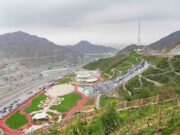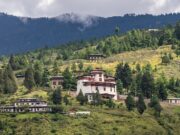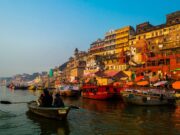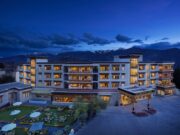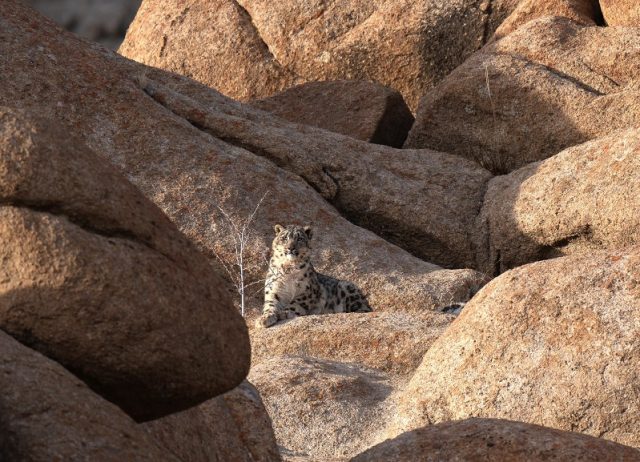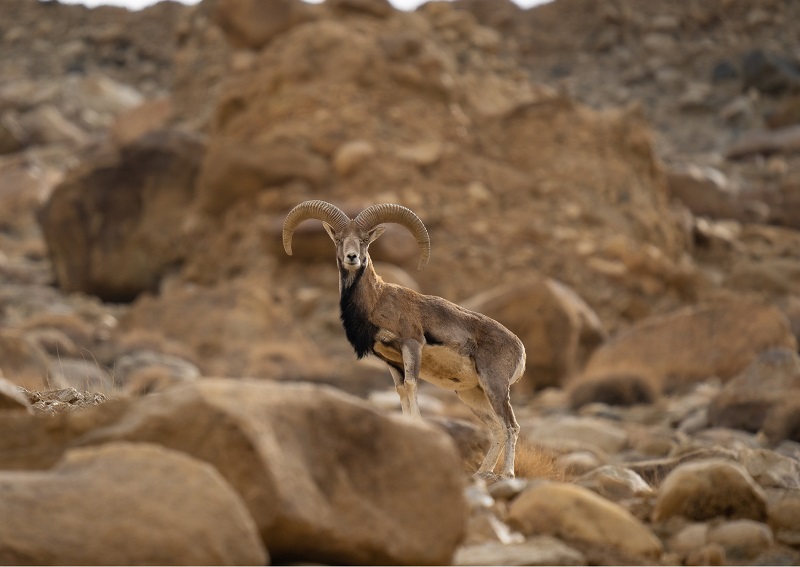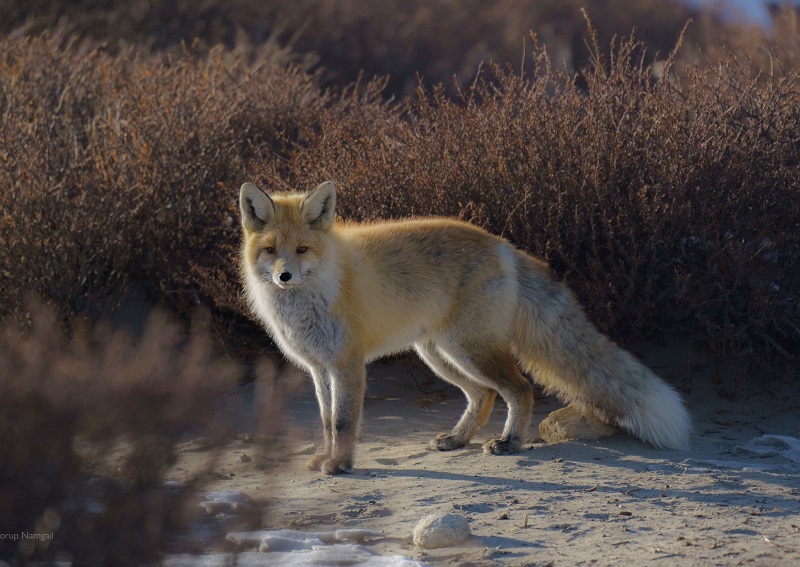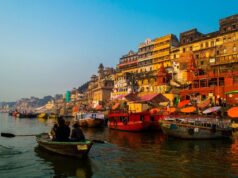Ladakh offers a diverse cultural tapestry with numerous tourist attractions, yet two products particularly shine in their extraordinary potential in inbound tourism. Hemis National Park is India’s top destination for snow leopard expeditions, and the Hemis Festival is a unique Ladakh gem. TTJ explores India’s role as a global hub for these experiences, emphasising the critical importance of nature and heritage conservation.
– Dorjay Namgyal and Prativa V. Bhalla
Hemis National Park: The enigmatic Snow Leopard

Situated in the heart of the Himalayas in Ladakh, Hemis National Park is renowned as the habitat for one of the world’s most enigmatic big cats, the snow leopard (Panthera uncia). Over time, this majestic feline has become the focal point of leopard expeditions, elevating Hemis National Park to a prominent wildlife tourism destination. Snow leopard expeditions have emerged as a significant tourism product within the park, drawing enthusiasts and enhancing its reputation as a key wildlife tourism site.
The formidable snow leopard, often hailed as the “Ghost of the Himalayas,” is a solitary and elusive apex predator renowned for its extraordinary adaptations to the challenging mountain terrain. Encountering this rare and enigmatic big cat, blessed with its thick fur, natural camouflage coat, and stealthy hunting prowess in its natural habitat, is an exceptional experience. Hemis National Park has the distinction of hosting a significant population of these magnificent creatures, solidifying its status as a worldwide hub for snow leopard expeditions.
A snow leopard expedition in Hemis National Park offers a unique blend of adventure, culture, and wildlife observation. The central objective of these expeditions is to track the elusive snow leopards across the rugged and untouched terrain of the national park. These hikes offer an excellent opportunity to cultivate a profound appreciation and reverence for the unspoiled magnificence of nature. Hikers are led by expert guides with extensive knowledge of snow leopard behaviour, which increases the chances of sightings. These expeditions often include interactions with Ladakhi communities, immersive cultural experiences, and traditional homestays to enable visitors to go back home with a deeper understanding and respect for local culture. Hemis National Park is not just home to snow leopards but also a natural habitat for the Eurasian Ibex, Tibetan Wolf and Red Fox. Visitors get the opportunity to observe other wildlife species, vibrant birdlife and capture stunning landscapes through their cameras. In turn, expedition fees also contribute to local conservation initiatives, directly supporting the protection of snow leopards and their habitat.
These adventures in Hemis National Park have gained immense popularity as it offers tourists a rare and unforgettable wildlife experience, often described as a once-in-a-lifetime opportunity to witness these elusive cats in their natural habitat. It attracts more tourists and provides economic benefits to the local community, increasing employment opportunities for guides, trackers, cooks, and accommodation providers. It has also played a crucial role in promoting sustainable livelihoods in the region. Moreover, this tourism product also contributes significantly to snow leopard conservation efforts. The data collected during expeditions aids researchers in understanding snow leopard behaviour, distribution, and population dynamics, which in turn informs conservation strategies.
They play a pivotal role in instilling a deep-seated appreciation and awareness for wildlife and conservation among tourists. They offer a valuable opportunity to gain insights into the delicate Himalayan ecosystem and understand the critical importance of preserving both the snow leopards and their habitat.
These expeditions are meticulously executed with a strong commitment to responsible tourism practices and strategies. Stringent measures are taken to safeguard the majestic snow leopards while minimising disruption to their daily routines. The success of snow leopard expeditions in Hemis National Park is a great example of striking a perfect delicate balance between conservation and tourism.
Hemis Festival 2024 – Celebrating Ladakh’s Rich Culture
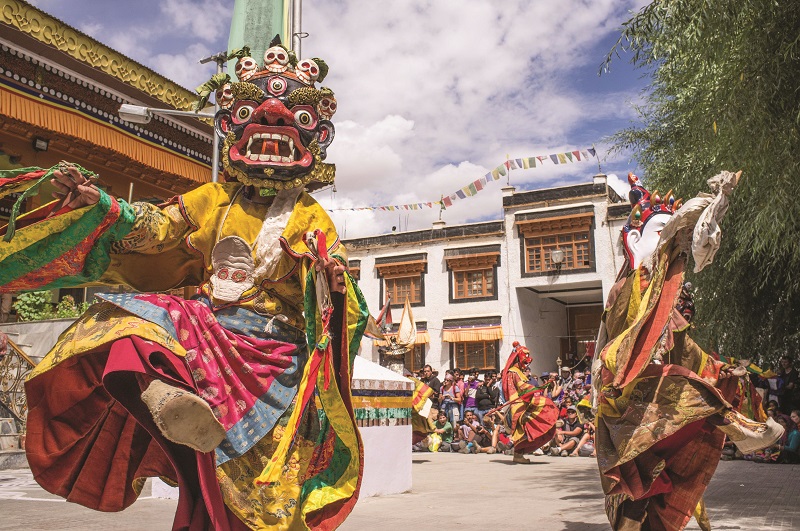
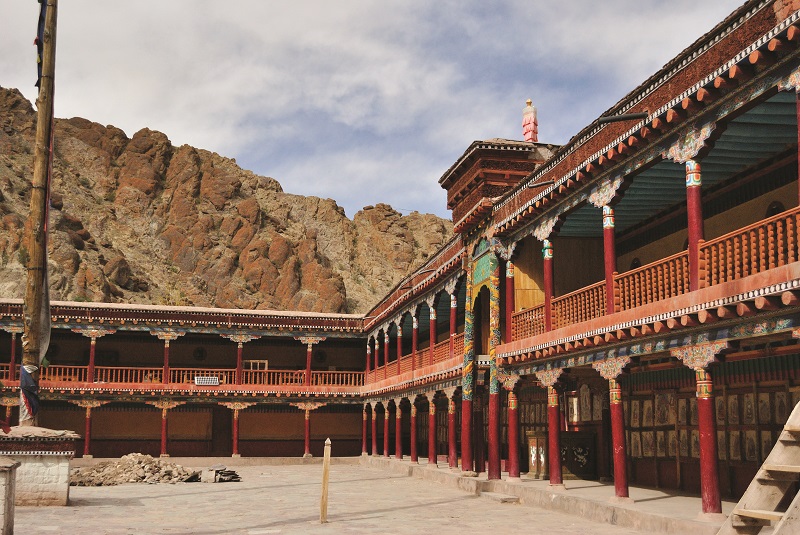
The Hemis festival is celebrated in the sacred Hemis Monastery, located 45 kilometres from Leh, in the serene Ladakh landscape. This illustrious two-day celebration transforms the monastery into a tapestry of colours, and the very air seems to hum with reverence and joy. It is a homage to Guru Padmasambhava, the visionary founder of Tibetan Buddhism. To be held on 16-17 June 2024, it holds immense potential as a tourism product, offering an array of experiences that can captivate and enrich the traveller’s journey.
This festival is a mesmerising spectacle of vivid pageantry, a profusion of vibrant costumes, and deeply spiritual ceremonies. At its heart lies the sacred masked dance, a captivating presentation by the Lamas – Buddhist monks, bedecked in elaborate, ornate costumes and masks that embody various deities and demons. These enchanting dances, accompanied by the haunting strains of traditional music, intricately weave the timeless story of good prevailing over evil, imbued with profound spiritual and cultural significance.
The Hemis Festival is also graced by the unveiling of the Thangka, a grand and intricately embroidered silk painting portraying Guru Padmasambhava. This masterpiece, displayed to the public only once a year, draws pilgrims and visitors from every corner of the globe. It’s a momentous occasion that unites people in reverence and celebration.
The festival is a cultural immersion into Ladakh. Visitors witness ancient rituals, interact with local monks, and gain insights into the spiritual traditions of the region. The vibrant masked dances performed by the monks, with their colourful costumes and intricate choreography, are a visual delight. Ladakh’s rich culinary heritage is on display during the festival, with an array of traditional Ladakhi dishes and snacks offering a taste of the region’s unique flavours. The festival often hosts bustling local markets where local artisans and craftsmen showcase exquisite, handcrafted souvenirs, textiles, and jewellery. For those seeking a spiritual experience, the Hemis Festival provides a chance to witness Buddhist rituals and teachings in a tranquil and reflective atmosphere. Visitors can explore the stunning Ladakhi terrain, visit other monasteries, and go on hikes.
While the Hemis Festival presents significant tourism potential, several challenges must be addressed to ensure its sustainability and preservation. The tourism influx strains local resources and the Himalayan ecosystem hence, sustainable practices, like waste management and responsible trekking, must be strictly followed. Infrastructure upgrades for accommodations and transportation are needed to accommodate the growing number of visitors while minimising environmental impact. Effective crowd management is crucial for safety and experience. Engaging local communities for tourism revenue benefits is vital for sustainable development.
The Hemis Festival in 2024 is poised to shine as a vibrant tourism product, drawing travellers from around the world to Ladakh’s cultural heart. With its rich history, colourful traditions, and stunning surroundings, the festival offers a diverse range of experiences that cater to a wide array of interests. However, to ensure its long-term success and preservation, it is imperative to strike a balance between tourism development and the conservation of Ladakh’s unique culture and environment. With careful planning and sustainable practices, the Hemis Festival can continue to enchant and inspire travellers for generations to come.














